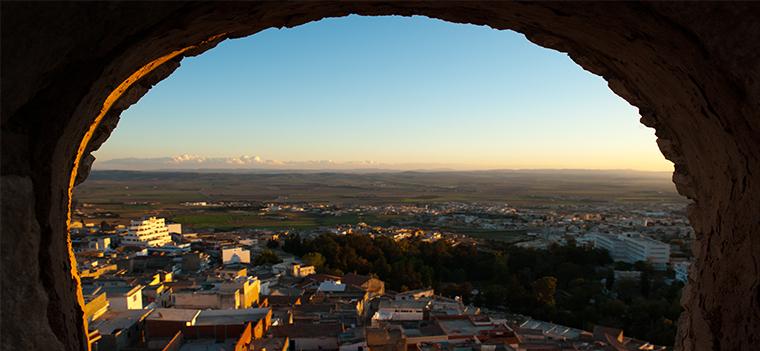News
- ESMAP has been supporting the Tunisian Government in its effort to improve the performance and financial viability of the energy sector.
- A new World Bank project will explore the feasibility of the Elmed Interconnector, a 600 MW undersea link between Tunisia’s and Italy’s power grids.
- The Elmed Interconnector is a first step in creating a Euro-Mediterranean electricity grid to reduce Tunisia’s energy costs, while helping to spur the scale-up of renewable energy.
A planned connection linking the electricity markets of Tunisia and Italy could be a key step in helping Tunisia realize its ambitious energy targets—generating 12 percent of electricity from renewables by 2020, and 30 percent by 2030. This includes realizing Tunisia’s significant solar potential.
Currently, less than 3 percent of Tunisia’s energy comes from renewable resources. Relying on natural gas and petroleum makes the country highly vulnerable to price volatility and disruptions in the international oil and gas markets. As the demand for energy grows in Tunisia, so too does its reliance on imported energy resources and inherent vulnerability to price shocks.
Continuous and stable power are essential to Tunisia’s growth.
A World Bank project, the US$13.4 million Tunisia-Italy Power Interconnector, is laying the groundwork for the development of an interconnector that will enable energy trade between Tunisia and Europe. The Elmed Interconnector is a proposed 600 MW undersea high-voltage direct current (HVDC) interconnector that will link Tunisia’s power grid to the much larger European network.
Elmed will lessen Tunisia’s reliance on imported natural gas and secure lower cost electricity, strengthening energy security. Elmed will also contribute to the diversification of the energy mix through sustainable energy development in Tunisia. Integrating large amounts of variable solar and wind energy into Tunisia’s power system requires complementary stable power sources. By providing access to large back-up power capacity through a flexible and controllable HVDC interconnection, Elmed facilitates absorption of intermittent solar and wind energy and, once Tunisia has scaled up its solar power generation, will be used to export clean energy to Europe.
As part of the project, the World Bank’s Energy Sector Management Assistance Program (ESMAP) and the Global Infrastructure Facility (GIF) are providing funding and technical assistance for the preparation of critically important technical, environmental, social, and financial feasibility studies. The terrestrial feasibility study, a critical component for budgeting and building the proposed interconnector, will determine potential routes and landing points for Elmed. These studies, in addition to the commercial, legal, financial, technical, and transaction advisory services that the project will provide, are necessary to confirm the feasibility of the interconnector, optimize its design, and apply for funding from the European Union.
Large-scale private sector investments in renewable energy generation in Tunisia are expected as a result of the planned interconnector, but the relative weakness of the national power utility could hinder these investments as the utility is the single electricity buyer. ESMAP is supporting the Tunisian Government in their effort to reform energy subsidies and create an energy regulatory authority. These reforms will improve the performance and financial viability of the energy sector.
“ESMAP support is strengthening the Government’s efforts to reform subsidies by helping to establish social protection measures for the most vulnerable, building public consensus for the changes through communication, and improving the performance of the power utility by setting up an energy regulatory authority,” said Moez Cherif, World Bank Lead Energy Economist for the Maghreb.
Increasing regional integration of electricity networks will ensure adequate and optimized electricity supplies in the long-term. In the near term, the interconnector will increase energy security and allow the integration of renewable energy, thus reducing the cost of electricity supply for Tunisians. The Elmed Interconnector has the potential to be a driver for sustainable and integrated economic development within the entire Maghreb area, and with Europe.
